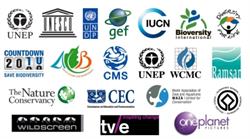 Partners
The following institutions are partners supporting the International Year of Biodiversity.
This list is constantly being updated as new partners join in the celebrations.
 www.arcehir.eu
www.arcehir.eu
The NGO A. R. C. E. Hir. leads to concrete actions, participatory and social fight against food insecurity and poverty. This NGO is trying to improve the living conditions of rural populations. Their work focuses on the limitation of deforestation, conservation, protection and awareness as to preserve the genetic heritage. In addition, they document, codify and catalog traditional knowledge on plants and animal species to better improve biodiversity in the region and in the country.
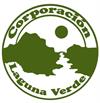 www.corporacionlagunaverde.cl
www.corporacionlagunaverde.cl
Our principal objective is to help assess the biodiversity of Mediterranean Chile.
Our organization is comprised of people committed to finding a balance between the human communities and the natural environment of Central Chile as well as the entire nation.
“We are aware of the environmental challenges involved in building a society that understands the interdependence of human beings and their environment.”
Our mission is to contribute to the development of a new society that will work together to create networks among actors concerned about environmental protection.

International Union for Conservation of Nature
www.iucn.org
IUCN, the International Union for Conservation of Nature, helps the world find pragmatic solutions to our most pressing environment and development challenges. It supports scientific research, manages field projects all over the world and brings governments, non-government organizations, United Nations agencies, companies and local communities together to develop and implement policy, laws and best practice.
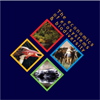
The Economics of Ecosystems and Biodiversity
www.teebweb.org
The Economics of Ecosystems and Biodiversity study is an international initiative to draw attention to the global economic benefits of biodiversity. Its objective is to highlight the growing cost of biodiversity loss and ecosystem degradation and to draw together expertise from the fields of science, economics and policy to enable practical actions moving forward. TEEB aims to assess, communicate and mainstream the urgency of actions through its four deliverables; D0: science and economic foundations, policy costs and costs of inaction, D1: policy opportunities for national and international policy-makers, D2: decision support for local administrators, D3: business risks, opportunities and metrics and D4: citizen and consumer ownership.
A Table From The Sea's Edge
www.atablefromtheseasedge.com
A Table From The Sea's Edge is an art project, devised by Silas Birtwistle to raise awareness of environmental issues and promote conservation of the world's coastal and marine biodiversity as a contribution to the UN International Year of Biological Diversity, 2010.
The project aims to embody the rich biodiversity of nature by crafting a large conference table surrounded by twelve chairs, made entirely from beautiful examples of driftwood - collected from four key hotspots around the world. It is a dramatic statement on the environment, uniting different cultures and coastal communities, connecting land with sea, and symbolizing the boundary between marine and terrestrial ecosystems, making connections between man's land-based activities and the marine and coastal environment.

A Time for Science
www.atimeforscience.org
Recognizing, the importance of environmental and science literacy in society today, and the value of “learning by doing,” A Time for Science is uniquely able to coordinate the talents of area volunteers, to marshal a variety of resources for support, and to provide a supportive environment with which to enable participants at all levels to become engaged both in nature and in the experience of science and thereby enhance environmental awareness and science education and literacy in our region.
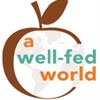
A Well-Fed World
awellfedworld.org
A Well-Fed World (AWFW) is an international advocacy organization focused on the complex inter-relevancies of dietary choices, hunger concerns, and environmental protection. Our systems component works with social justice leaders and policy-makers to reduce the drastic growth and intensification of livestock production. Reversing this ‘livestock revolution’ is critical for increasing food security, slowing biodiversity loss, and swiftly reducing greenhouse gas concentrations. Additionally, we work ‘hands-on’ at the grassroots level, both directly participating and through our grants program. Our grants empower local stakeholders to pursue a wide variety of self-determined goals, such as self-sustaining food production and ecosystem services education.

Acquario Calagonone
www.acquariocalagonone.it
The Aquarium of Cala Gonone, designed by American architect Peter Chermayeff, in collaboration with the architect of Macomer Sebastiano Gaias is integrated in a natural and unique landscape within the Marine National Park Gulf of Orosei, making it one of the most beautiful aquariums in the world.
The Aquarium is a center of education and teaching applied to encourage a responsible attitude and awareness towards the environment and emphasize the importance and its biodiversity. The aim is also to enable a future international accreditation structure, as a reference point in the Mediterranean for the study, research and rescue of marine mammals and dangerous species.
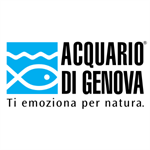
Acquario di Genova
www.acquariodigenova.it
The Acquario di Genova hosts about 1.250.000 visitors each year. With its 10.000 square meters and its 63 exhibition tanks it is the largest indoor aquarium in Europe, and one of the most attended cultural institutions in Italy.
The task of choosing which species and environments to present takes into account their environmental importance or how they can arouse curiosity and positive emotions in visitors. Therefore the Acquario di Genova can be considered a sort of messenger for animals, plants, seas, ecosystems and countries aiming at teaching either the respect towards sea environment or to inform about its problems and safeguard.


Administración de Parques Nacionales - Argentina
www.parquesnacionales.gov.ar
"Argentina's National Park Administration is part of the National State, and has been created to protect and to offer to the world, emblematic samples of the natural and cultural heritage. The Administration has 37 protected areas, covering approximately 3.700.000 hectares (around 400 provincial protected areas also exist in our country, covering approx. 17.900.000 hectares).
To have protected areas is to be aware of the country's richness to plan its future and develop its present. Thus, protected areas must become tools for sustainable development, and as such true opportunities of growth, work and social equity".

Agrilogie
www.agrilogie.ch
Grange-Verney est un centre de formation des agriculteurs, des palefreniers et des écuyers. C'est aussi un domaine agricole et des stations agricoles cantonales: la station de culture des champs, la station de protection des plantes, la station de zootechnie, le service de prévention des accidents. Marcelin est spécialisé dans les métiers du vin (viticulteurs, cavistes) et la préparation de la maturité professionnelle, mais il y a aussi la possibilité d'y préparer un CFC agricole avec une spécialisation en viticulture. Grange-Verney et Marcelin sont des centres de congrès et hébergent de nombreuses associations professionnelles.

Amazonia Reforestation
www.myreforestation.com
Amazonia Reforestation plants tropical trees for profit, socio-economic development and expanded wildlife habitat in Vichada, Colombia. Investors can participate in this program by buying fast growing tropical trees and sharing in the returns based on a 10 year cycle. We follow a sustainable model with mixed-species cultivation and staggered harvesting and replanting for the maximum benefit of the planet and local wildlife. Our program also seeks to commercialize native tree species that otherwise would be logged from natural forests, by supporting native tree seed collection, nurseries and planting. We believe that biodiverse plantations with modern forestry practices offer the best results for humans and local wildlife alike.
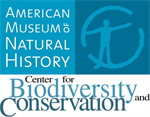
American Museum of Natural History’s Center for Biodiversity and Conservation
www.amnh.org
The American Museum of Natural History’s Center for Biodiversity and Conservation (CBC) was created in 1993 to apply the Museum’s extensive scientific and educational resources to conservation policy and action. The CBC develops model programs that integrate research, education, and outreach so that people become participants in its conservation. The CBC’s mission is to mitigate critical threats to global biological and cultural diversity by:
- Advancing scientific research in diverse ecosystems
- Strengthening the application of science to conservation practice and policy
- Developing professional, institutional, and community capacity
- Furthering AMNH's efforts to heighten public understanding and stewardship of biodiversity.

Apiculture in Galicia
www.apiculturagalega.org
Apiculture in Galicia, a thousand-years-old tradition Numerous constructions made of stone, today an integral part of the Galician (North of Spain) landscape as well as its cultural heritage, bear witness of the activity evolved around beekeeping. We intend to offer a portrait of apiculture in Galicia, from its traditions to its modern day features, highlighting the especial connection between beekeeping and local environment. Objetive: Develop a mulifunctional beekeeping with pluriactive beekeepers linking the future of the bee with the future of environment.

Applied Environmental Research Foundation
www.aerfindia.org
Applied Environmental Research Foundation (AERF) has been working with a mission to achieve Conservation on ground for last 15 years in the Northern Western Ghats of India- a global biodiversity hotspot. AERF’s key strategy is to involve people in the process of conservation right from awareness generation to implementation. AERF’s pioneering work on Sacred grove’s conservation showcases the importance of ecosystem approach. Moreover AERF has also successfully demonstrated mainstreaming of biodiversity in cross-cutting issues such as energy and livelihoods through various initiatives. It is AERF’s constant endeavor to establish sustainable linkages between biodiversity conservation and human needs through applied research.

Aqua - National Aquarium in Baltimore
www.aqua.org
From the Chesapeake Bay to Costa Rica, National Aquarium programs help people apply practical and programmatic solutions for protecting marine life and coastlines. As a world-class entertainment attraction the visitor experience is a priority and exhibits at the Baltimore and Washington, DC venues connect the public to the biodiversity around us. Our commitment to education on the aquatic environment extends to thousands of school children who make emotional connections that create lasting enthusiasm for the environment. By establishing alliances and creating partnerships around the world, the National Aquarium collaborates with like-minded organizations to achieve more together.

ARKive - Image of Life on Earth
www.arkive.org
ARKive is a unique global initiative, gathering together the very best films and photographs of the world's endangered species into one centralised digital library, to create a stunning audio-visual record of life on Earth. ARKive's current priority is to complete audio-visual profiles for those species at most risk of extinction according to the IUCN Red List of Threatened Species.
Throughout the year, as part of our ‘Most Wanted' challenge, ARKive aims to highlight the plight of the world’s threatened species by tracking down imagery for 17,000 of the most endangered animals and plants. Here is a small selection of ARKive species which play a role in improving human well-being.

ASEAN Centre for Biodiversity
www.aseanbiodiversity.org
The ASEAN Centre for Biodiversity (ACB) is ASEAN’s response to the challenge of biodiversity loss. It is an intergovernmental regional centre of excellence that facilitates cooperation and coordination among the ten ASEAN Member States and with relevant national governments and regional and international organizations on the conservation and sustainable use of biological diversity, as well as the fair and equitable sharing of benefits arising from the use of such natural treasures.
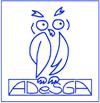
Asociación Vecinal para el Desarrollo Sostenible del Garruchal
www.adesga.org
La Asociación Vecinal para el Desarrollo Sostenible del Garruchal nace como un movimiento vecinal de residentes en un paraje natural de grandes valores paisajísticos, de fauna y flora, geología y uso agrícola: la Zona de Especial Protección para las Aves “Monte de El Valle y Sierras de Altahona y Escalona", hábitat con la mayor densidad mundial conocida de búho real. En ella desarrollamos iniciativas para mejorar la sostenibilidad de las actividades humanas realizando proyectos con un fuerte componente de participación ciudadana, apoyados por los acuerdos de colaboración con el Ayuntamiento de Murcia, Comunidad Autónoma de la Región de Murcia y Ministerio de Medio ambiente y Medio Rural y Marino, especialmente a través de la Confederación Hidrográfica del Segura.

Associação Transumância e Natureza
www.atnatureza.org
Associação Transumância e Natureza is a non-profit organization that was created in 2000. It is classified as an Environmental Non-Governmental Organization, by Agência Portuguesa de Ambiente.ATN's mission is to work for the conservation of the natural heritage of the Riba-Côa region.

Augusta Margaret River Tourism Association
www.margaretriver.com
The Augusta Margaret River Tourism Association Inc. is an innovative, progressive trade association with a network of over 450 members. The Association is a focused, cohesive organisation with high values fostering excellence in sustainable tourism. The Augusta-Margaret River Tourism Association (Inc) is a not for profit organization with a Committee of Management elected by the membership.

Australasian Wildlife Management Society
www.awms.org.au
The Australasian Wildlife Management Society (AWMS) promotes the study and application of scientific management of vertebrate fauna in the Australasian region. Australia and New Zealand have unique faunal biodiversities, much of which is threatened by predation and habitat change by humans, altered fire regimes, invasive species and climate change. AWMS, established in 1988, encourages the broader community to scientifically develop and implement plans to manage our fauna, and to review these plans within social, environmental, economic and political contexts. AWMS people include scientists, educators, students, wildlife managers, extension specialists and policy makers from all over Australia and New Zealand, and from other countries.

Australian Science
www.australianscience.com.au
Australian Science is a privately-funded foundation dedicated to the online preservation of digital information, reference data, and scientific materials. Our aim is to establish a unified list of libraries, universities, and technology centres equally dedicated to this goal. Australian Science is one of the key partners within the network committed to the advancement of science both in Australia and worldwide.
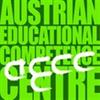
Austrian Educational Competence Centre of Biology
aeccbio.univie.ac.at/2010-jahr-der-biodiversitaet
The Austrian Educational Competence Centre of Biology at the University of Vienna is active in biology education research (one content focus is ecology, outdoor biology and biodiversity) and is engaged in teacher training at university as well as in-service teacher training all over Austria. The team of AECC-Bio (Austrian Educational Competence Centre of Biology) develops topics for biodiversity education during 2010 – the International Year of Biodiversity. Each month one topic is released. The topics and their location should be easily accessed by the students (e.g. using school surroundings) and ordered by the phonology through the year. The following structure helps the teachers and biology educators to adapt the topic for their classes: first the biological content is summarized, based on this introduction is the idea for the teaching sequence. Additionally we offer all materials needed for the teaching sequence. Central aim for designing the materials is to realize the whole range of inquiry learning by the students during one year as well as topics for all ages (K1 to K12). The materials will remain at our website after 2010.
|